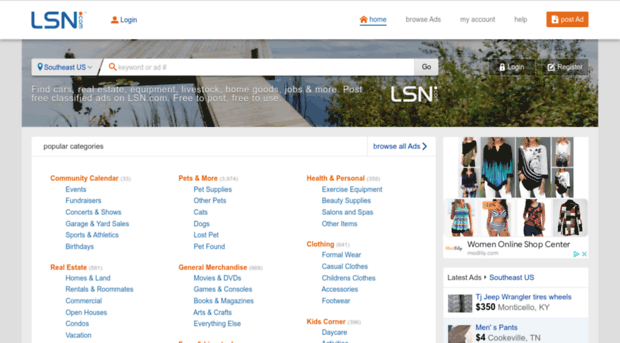
No business in today’s technology-driven ecosystem has been immune to cybersecurity issues. Most businesses have data that is barely protected with an inferior cybersecurity setup and below-par IT security. It is no wonder that with an increase in demand for work from anywhere coupled with Covid 19 imposed work from home arrangements, the number of compromised systems has increased manifold.
A glance at recent cybersecurity trends and statistics will hopefully give you an accurate picture of how severe and expensive cybersecurity breaches are and how important cyber security training is.
Here is a compilation of some of the critical cybersecurity facts and statistics.
Cybersecurity Facts and Stats
It is estimated that the worldwide information security industry will reach over $170 billion by the year 2022. A significant driving force behind this swell is businesses’ concerted efforts to reinforce their defenses against a cybersecurity threat. Even so, the incidences of cybersecurity breaches are on the rise. Most of such violations have human error as the primary reason. The number is pegged at 95% by a reputed cybersecurity research firm. It is thus vital to learn cyber security.
Let’s start with the top 20 cybersecurity breach-related statistics.
- Almost 95% of cybersecurity breaches result from a human error in judgment.
- The cybersecurity software market is set to surpass $170 billion by 2022.
- Spear phishing was the most attempted type of phishing, making up to 88% of the global phishing incidents in 2019.
- An overwhelming, close to 70% of CEOs/CTOs feel their cybersecurity risks are on the rise.
- A study finds that only about 5% of storage in onsite locations is fully protected.
- Close to 36 billion customer records were exposed to data breaches in the year 2020.
- Only 10% of data breaches are espionage motivated. A whopping 86% of breaches are financially motivated.
- 17% of breaches were caused by malware, 22% of breaches involved phishing as the primary attack vector, and 45% of cybersecurity breaches were affected using hacking.
- The number of recorded breaches between Jan 2005 and May 2020 stands at 11762.
- Two of the topmost malicious attachments are .doc and .dot, contributing to a whopping 37% of the total attachment-based attacks. The .exe file type attachment makes for 19.5% of such breaches.
- On average, the cost of a significant cybersecurity breach is pegged at $3.86 million.
- On average, it takes over 200 days to identify a breach.
- The average lifecycle of a breach was found to be 280 days from the day of detection to containment.
- Just in 2020, 58% of the breaches involved personal data.
- Cybersecurity breaches have increased 67% from the numbers seen since 2014. It has increased by 11% since 2018.
- Close to 65% of general users have never checked to see if they were impacted by a cybersecurity breach.
- Over 50% of the general users do not know what steps to take after a cybersecurity breach is detected.
- Over 50% of cybersecurity budgets were allocated towards security in the year 2020.
- On average, the cost of a malware attack amounts to $2.6 million.
- The sector that incurs the highest breach is the healthcare industry, with the average data breach cost pegged at $7.13 million.
Further to the above listed below are some of the significant breaches
- A Twitter breach in the year 202 impacted 130 accounts that included the who’s who in the USA. The affected accounts included past president of the USA, Elon Musk resulting in a swindling of $121K in Bitcoin. These involved over 300 transactions.
- Marriott, one of the most respected operators in the global hospitality industry, reported a data breach involving the loss of 5.2 million guests to the perpetrators.
- MGM in 2019 reported a data breach that resulted in the loss of 142 million hotel guests to the perpetrators.
- In the year 2018, Marriott-Starwood reported a data breach of over 500 million customers.
- One hundred fifty million customer data was compromised at a hacking targeted at Under Armor through its My Fitness Pal app.
- Equifax in 2017 reported a data breach resulting in a compromise of consumer records amounting to 147.9 million.
- Equifax lost over $4 billion in the breach reported in 2017.
- An attack on the FriendFinder website in 2017, resulted in 412 million user accounts being stolen.
- The infamous Wannacry virus reported in 2017 affected over 400000 machines and 100000 groups in over 150 countries.
- Uber in 2016 reported that it lost over 57million customer and driver records to hackers.
- Uber agreed, although secretly, to settle the loss of 57 million customers to hackers by paying an undisclosed amount for deleting the data.
- Yahoo in 2013 reported the most significant breach of all time of 3 billion accounts.
- The average ransomware payment rose over 33% in the year 2020 to $11605.
- An average of 10573 mobile apps found to be malicious were blocked per day in 2018.
- Email is the primary source of malware, accounting for more than 94%.
- On average, a ransomware attack costs a business upwards of $133K.
- Microsoft Office files make up for over 48% of malicious attachments.
- Ransomware attacks were found to be more prevalent in countries with a large population connected to the internet. Ransomware in the US accounted for 18% of all global attacks.
- Spam campaigns account for about 60% of malicious domains.
- Around 20% of the malicious domains are newly created. Most of them being used within one week of registration for malicious activity.
Cybersecurity Trends to keep a watch on 2022
Looking forward to the year 2022, there are some significant cybersecurity trends that businesses need to keep an eye on.
Some significant industry trends set to roll in the year 2020-2021 and continuing into 2022 were brought on by the Covid-19 pandemic, the rollout of 5G, need for connectivity when working from home, among other factors.
- Cybercriminals will continue to target remote workers. This trend will only increase as time passes.
- Remote workforces have necessitated the use of cloud-based infrastructure. Cybercriminals will continue to claw into the securities of cloud infrastructure.
- The gap in cybersecurity skills will continue to remain a concern.
- With limited security available to IoT devices, cybercriminals will mount more attacks on IoT devices.
Some of the Cybersecurity trends to consider in 2022 are as follows:
- Increased Adoption of Zero Trust Security Model.
- Proliferation of AI-based Cybersecurity Solutions.
- Shift Towards Automation in Cybersecurity.
- Rise in Cloud-based Security Solutions.
- Emergence of Blockchain-based Security Solutions.
- Attacks on Critical Infrastructure.
- Ransomware Attacks.
- Rise of AI and Machine Learning.
Conclusion
Cybersecurity will remain a concern for a long time to come unless security systems evolve into a fully artificial intelligence-based system that can detect threats with relative ease and initiate threat mitigation steps. You can train yourself to become more proficient with cybersecurity’s nuances through detailed cyber security courses and advanced cyber security programs.



